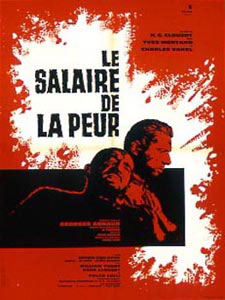 |
| Gérard Philipe and Michèle Morgan in Les Grandes Manoeuvres |
Armand de la Verne: Gérard Philipe
Victor Duverger: Jean Desailly
Félix Leroy: Yves Robert
Lucie: Brigitte Bardot
The Colonel: Pierre Dux
Armand's Orderly: Jacques Fabbri
Director: René Clair
Screenplay: René Clair, Jérôme Géronimi, Jean Marsan
Cinematography: Robert Lefebvre
Production design: Léon Barsacq
Film editing: Louisette Hautecoeur, Denise Natot
Music: Georges Van Parys
René Clair's first film in color is a pretty pastel confection set in a French village at the end of the 19th century, a period many French filmmakers were drawn to in part because it held a kind of autumnal glow before the harsh winter that would set in during the second decade of the 20th century. A handsome womanizing lieutenant, Armand de la Verne, stationed in the village before the beginning of the army's summer maneuvers, wagers that he can seduce the first woman to enter the room. She happens to be Marie-Louise Rivière, a divorcée who has opened a millinery in the village. And they happen to be played by Gèrard Philipe and Michèle Morgan, two of the biggest French stars of the day, both of them in middle age and endowed with a kind of gravitas that means the movie is not going to be a frivolous sex farce. For sexiness, we have a parallel flirtation between another lieutenant, Félix Leroy, and the saucy young Lucie, played by the saucy young Brigitte Bardot. Yet the film is weighed down by the more mature couple, to the point that Clair's romantic nostalgia never quite comes off the screen and engages the audience. It's lovely to look at, and it has admirers who defend its bittersweet tone, but it feels to me more like an exercise in period filmmaking than a fully committed work -- even though it was one of Clair's favorite films.
